300 scholarly books by Brandeis University Press and 30
start with C
300 scholarly books by Brandeis University Press and 30
300 scholarly books by Brandeis University Press
30 start with C start with C
30 start with C start with C

Cadaverland
Inventing a Pathology of Catastrophe for Holocaust Survival [The Limits of Medical Knowledge and Historical Memory in France]
Michael Dorland
Brandeis University Press, 2009
In this extraordinary study, Michael Dorland explores sixty years of medical attempts by French doctors (mainly in the fields of neuropsychiatry and psychoanalysis) to describe the effects of concentration camp incarceration on Holocaust survivors. Dorland begins with a discussion of the liberation of concentration camp survivors, their stay in deportation camps, and eventual return to France, analyzing the circulation of mainly medical (neuropsychiatric) knowledge, its struggles to establish a symptomology of camp effects, and its broadening out into connected medical fields such as psychoanalysis. He then turns specifically to the French medical doctors who studied Holocaust survivors, and he investigates somatic, psychological, and holistic conceptions of survivors as patients and human beings. The final third of the book offers a comparative look at the “psy-science” approach to Holocaust survival beyond France, particularly in the United States and Israel. He illuminates the peculiar journey of a medical discourse that began in France but took on new forms elsewhere, eventually expanding into nonmedical fields to create the basis of the “traumato-culture” with which we are familiar today. Embedding his analysis of different medical discourses in the sociopolitical history of France in the twentieth century, he also looks at the French Jewish Question as it affected French medicine, the effects of five years of Nazi Occupation, France’s enthusiastic collaboration, and the problems this would pose for postwar collective memory.
[more]
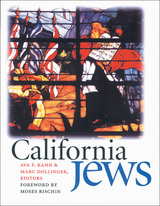
California Jews
Edited by Ava F. Kahn and Marc Dollinger
Brandeis University Press, 2011
The nation’s thirty-first state emerged early as one of its most diverse as people immigrated to the west. California’s indigenous tribes were forced off their lands first by Spanish settlers, then by the arrival of gold miners from every corner of the world. Because of its Catholic missionary history, Gold Rush California did not experience a more exclusive eastern-style Protestantism. This permitted more rapid and inclusive acculturation. California Jews, unlike their eastern counterparts whose arrival often followed that of European Protestants, were often among the first settlers to establish a west coast community. Jewish immigrants to California took advantage of its physical environment, ethnic diversity, and cultural distinctiveness to fashion a form of Judaism unique in the American experience. California Jews enjoyed unprecedented access to political power a generation earlier than their New York counterparts. They thrived in the multicultural mix, redefining the classic black-white racial binary by forging relations with a variety of religious and ethnic groups in both San Francisco and Los Angeles.
[more]

Canine Pioneer
The Extraordinary Life of Rudolphina Menzel
Edited by Susan Martha Kahn
Brandeis University Press, 2022
An insightful look at the life and legacy of a pioneer cynologist between Europe and Israel.
Rudolphina Menzel (née Waltuch, 1891–1973), was a Viennese-born, Jewish scientist whose pioneering research on canine psychology, development, and behavior fundamentally shaped the ways dogs came to be trained, cared for, and understood. Between the two world wars, Menzel was known throughout Europe as one of the foremost breeders and trainers of police dogs and served as a sought-after consultant at Kummersdorf, the German military dog training institute in Berlin. She was also a fervent Zionist who was responsible for inventing the canine infrastructure in what came to be the State of Israel and for training hundreds of dogs to protect Jewish lives and property in pre-state Palestine. Teaching Jews to like dogs and training dogs to serve Jews became Menzel’s unique kind of Zionist mission. Detailed and insightful, Canine Pioneer: The Extraordinary Life of Rudolphina Menzel brings to light an important piece of history.
Rudolphina Menzel (née Waltuch, 1891–1973), was a Viennese-born, Jewish scientist whose pioneering research on canine psychology, development, and behavior fundamentally shaped the ways dogs came to be trained, cared for, and understood. Between the two world wars, Menzel was known throughout Europe as one of the foremost breeders and trainers of police dogs and served as a sought-after consultant at Kummersdorf, the German military dog training institute in Berlin. She was also a fervent Zionist who was responsible for inventing the canine infrastructure in what came to be the State of Israel and for training hundreds of dogs to protect Jewish lives and property in pre-state Palestine. Teaching Jews to like dogs and training dogs to serve Jews became Menzel’s unique kind of Zionist mission. Detailed and insightful, Canine Pioneer: The Extraordinary Life of Rudolphina Menzel brings to light an important piece of history.
[more]
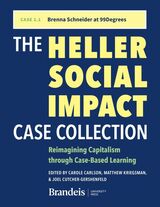
CASE 2.1 Brenna Schneider at 99Degrees
Carole Carlson and Rachael Weiker
Brandeis University Press, 2024
This case descibes the journey of a social entrepreneur as she establishes a new venture in the garment manufacturing business. It explores how she chose to become an entrepreneur, how she utilized her ecosystem to establish her venture and the choices and challenges she faced creating and financing a new venture. At the end she is faced with strategic decisions about how to grow the venture and its impact. This case provides an excellent illustration of the challenges faced by early stage entrepreneurs, as well as the value of using a hypothesis driven approach to evolving a new venture.
[more]
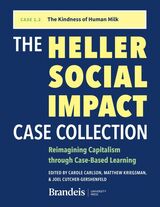
CASE 2.2 The Kindness of Human Milk
The Founding of Mothers’ MilkBank Northeast
Naomi Bromberg Bar-Yam and Mark I. Rosen
Brandeis University Press, 2024
This case explores the formation and growth of an innovative nonprofit venture that provides human milk banking services. It describes the challenges faced by the founder getting medical buy in, establishing operations and adressing intial challenges. This case enables an exploration of the challenges of entering a new and untested market. This case demonstrates the value of using a business model canvas to evolve a new venture as well as the way an entreprenur can utilize key marketing frameworks (5 P and 5 C) to evolve a new venture.
[more]
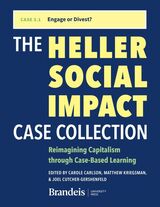
CASE 3.1 Engage or Divest? Trillium Asset Management, Facebook Governance,and Shareholder Advocacy
Monique DeSimone, Jess Lynch-Foust, Douglass Guernsey, and Laura Burroughs
Brandeis University Press, 2024
This case presents a challenge facing Trilliam Asset Management around wheter to continue advancing ESG issues with Facebook or divest. The case provides a window into corporate goverance and hard choices that must be made with incomplete information.
[more]
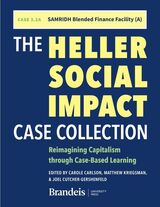
CASE 3.2A SAMRIDH Blended Finance Facility
Accelerating Pandemic Responseand Building Equitable Health Systems in India (A)
Archita Adlakha, Neeta Rao, Achin B. N. Biyani, Ritika Pandey, and Sudheer Nadipally
Brandeis University Press, 2024
Part A of this case introduces students to a US AID/India initiative accelerating the pandemic response while building equitable health systems in India. A modular approach with public and privater partners is degined to accomplish together what they can't do separately. This is an excellent case for exploring financial system innovation and social impact in India, a leading global setting.
[more]
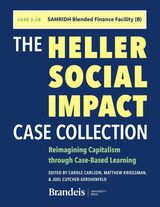
CASE 3.2B SAMRIDH Blended Finance Facility
Accelerating Pandemic Responseand Building Equitable Health Systems in India (B)
Archita Adlakha, Neeta Rao, Achin B. N. Biyani, Ritika Pandey, and Sudheer Nadipally
Brandeis University Press, 2024
Part B of this case provides initial results from to a US AID/India initiative accelerating the pandemic response while building equitable health systems in India. Innovative financial approaches are outlined and emergent challenges are identified. This case is excellent for raising issues around the sustainability of financial innovations designed to have a social impact.
[more]
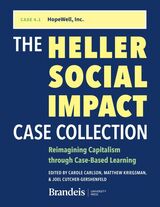
CASE 4.1 HopeWell, Inc.
Della M. Hughes and Marji Erickson Warfield
Brandeis University Press, 2024
This case explores the work of leaders and staff at Hopewell, an innovative social services nonprofit, to evolve its services and achieve organizational alignment. It includes an in-depth discussion of the use of theory of change and logic models to support transformative change. It also discusses how Hopewell aligned its transformation to organizational values and leveraged and aligned staff to create consensus. This is an excellent case for exploring transformational leadership or organizational change in a nonprofit setting. use a logic model to evolve its services. It includes an in-depth discussion of the use of theory of change and logic models to support transformative change. It also discusses how it aligned its transformation to organizational values and leveraged and aligned staff to create consensus. This case enables instructors to illustrate the value of using a theory of change and logic model to articulate the strategy of and drive change in a high-performance social venture.
[more]
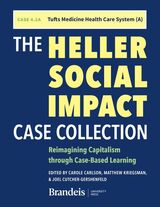
CASE 4.2A Tufts Medicine Health Care System
Merging Hospitals in a New Model (A)
Maher Tabba and Jon Chilingerian
Brandeis University Press, 2024
This case builds on the Tufts Medicine Health Care System (A) case by exploring the barriers and challenges Tufts Medicine faced aligning operations and stakeholders. It discusses the challenges the leaders experienced bringing together an academic medical center with a community hospital system while meeting its goals of maintaining its competitive position while providing high quality care. A discussion of this case will enable instructors to explore the challenges and opportunities of health care mergers in depth.
[more]
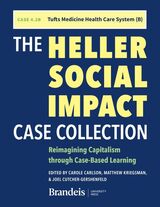
CASE 4.2B Tufts Medicine Health Care System
Merging Hospitals in a New Model (B)
Maher Tabba and Jon Chilingerian
Brandeis University Press, 2024
This case builds on the Tufts Medicine Health Care System (A) case by exploring the barriers and challenges Tufts Medicine faced aligning operations and stakeholders. It discusses the challenges the leaders experienced bringing together an academic medical center with a community hospital system while meeting its goals of maintaining its competitive position while providing high quality care. A discussion of this case will enable instructors to explore the challenges and opportunities of health care mergers in depth.
[more]
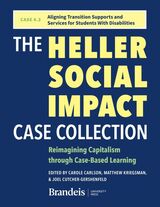
CASE 4.3 Aligning Transition Supports and Services for Students With Disabilities
Jennifer Stewart
Brandeis University Press, 2024
This case describes the State of Colorado's initiative to create a state level series of interagency partnership that improve the coordination of support services for students and youth with disabilities and its work piloting and then sustaining this approach. It includes an example of a family including a youth with autism and their challenges navigating the complexites of the support system. The case describes the development of a services sequencing model and the use of four pilot sites to identify the best way to deliver aligned services. The case ends with the challenge of how to plan to expand the sequencing of services model.
[more]
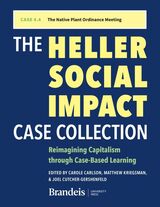
CASE 4.4 The Native Plant Ordinance Meeting
Elizabeth V. Sessions
Brandeis University Press, 2024
This simulation puts students in positions of stakeholders in a fictional community negotiating whether to use 100% native species in new city plantings. Students are assigned roles as advocates, city officials and politicans all with different perspectives and interests. They must find common ground to come to an agreement that is both practical and evironmentally positive. The simulaiton enables instructors to illustrate the benefits of a value creation mindset in negoations.
[more]
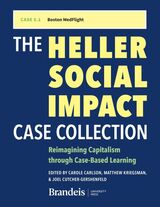
CASE 5.1 Boston MedFlight
Leveraging Data to Design a New Helicopter Algorithm
Matthew Kriegsman
Brandeis University Press, 2024
This case describes the potential introduction of a new helicopter operation named “Smart Launch” at the leading non-profit air ambulance of Boston MedFlight, with the goal of decreasing the estimated arrival time of transports and thereby improving patient outcomes. The case first provides a detailed background for how patient requests turn into successful transports, and thereafter outlines the estimated operational, financial and social impact of implementing this new operation. This is an excellent case for leveraging real transport data and management’s questions, with the challenge to determine if, how, and “what needs to be true?” to successfully unlock the new Smart Launch operation.
[more]
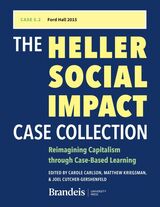
CASE 5.2 Ford Hall 2015
Avery Brien, Mónica García, Sonia Kikeri, and Miya Ward
Brandeis University Press, 2024
This first-hand account of the student takeover of the campus administration building raises strategic and operational issues through a lens of racial inequities and intersectionality. It has echos of a 1968 protest by black students, which had very similar demands and it happened in the context of student protests and demands across the nation. This is an excellent case for apprciating social protest through an organizational lens and appreciating ways that university campuses can be held to be accountable for their espoused values.
[more]

CASE 5.3 The Interfaith Worker Rights Council Call Center
Joel Cutcher-Gershenfeld
Brandeis University Press, 2024
This case presents multiple operations challenges in a non-profit social services setting, with a focus on immigrant worker rights. The case inlcudes paid staff, volunteers, and executive leadership facing breakdowns in services to clients, legislators, advicates, and others. This is an excellent case for applying process-floew analysis in a social impact setting.
[more]
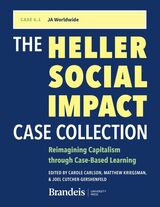
CASE 6.1 JA Worldwide
Creating a Global Brand
Keshia Engwenyi, Julia Robinson-Rosendorff, and Sean C. Rush
Brandeis University Press, 2024
This case presents the branding challenge for Junior Achievement (JA) Worldwide, a very large and impactful social impact organization with limiting brand awareness. Reaching over 10 million students in over 100 countries, there is a great story to be told. The case provides students with the opportunity to lean in on a high impact branding challenge.
[more]
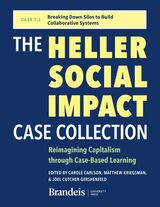
CASE 7.1 Breaking Down Silos to Build Collaborative Systems
Lauren Hajjar, Jody Hoffer Gittell, Ninna Meier, and Bill Gunn
Brandeis University Press, 2024
This simulation presents the challenge of integrating regional health system payments in a context where parties each operate independently and the social determinents of health are incompletly addressed. Set in New Hampshire, respoinding to a fedearal initiative, the simulation features five roles, each essential to the integraiton challenge. Ths case provides students with an experiential view on the challenge of breaking down silos in social impact service delivery.
[more]
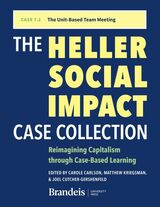
CASE 7.2 The Unit-BasedTeam Meeting
Joel Cutcher-Gershenfeld
Brandeis University Press, 2024
This simulation puts studens in front-line health care roles navigating typical issues faced in a team-based work system. The facilitator role illustrates the imporance of facilitation (even with a student new to the role). Confidential role information for the five roles brings students to the meeting with both common and competing interests. This is an excellent case for illustrating the front-line dynamics in a high performance worksystem, as well as the value of employee voice.
[more]

Chaim Weizmann
A Biography
Jehuda Reinharz and Motti Golani
Brandeis University Press, 2024
A magisterial biography of Israel’s first president.
In Chaim Weizmann: A Biography, Jehuda Reinharz and Motti Golani show how Weizmann, a leader of the World Zionist Organization who became the first president of Israel, advocated for a Jewish state by gaining the support of influential politicians and statesmen as well as Jews around the world. Beginning with his childhood in Belorussia and concluding with his tenure as president, Reinharz and Golani describe how a Russian Jew, who immigrated to the United Kingdom in the early twentieth century, was able to advance the goals of Theodor Herzl, the founder of the Zionist Organization. Weizmann is also shown as a man of human foibles—his infatuations, political machinations, and elitism—as well as a man of admirable qualities—intelligence, wit, charisma, and dedication.
Weizmann, who came to the UK to work as a biochemist, was in regular communication with British political figures, including prime ministers Arthur James Balfour, David Lloyd George, Winston Churchill, and Ramsay MacDonald. He also met presidents of the United States from Woodrow Wilson to Harry Truman. His success in earning the support of British political figures helped lead to the Balfour Declaration, which advocated for a “national home” for the Jewish people in Palestine.
As the authors show in this authoritative account of Weizmann’s life, Weizmann was guided by the belief that “Zion shall be redeemed in justice,” a phrase that recurs often in his writings.
In Chaim Weizmann: A Biography, Jehuda Reinharz and Motti Golani show how Weizmann, a leader of the World Zionist Organization who became the first president of Israel, advocated for a Jewish state by gaining the support of influential politicians and statesmen as well as Jews around the world. Beginning with his childhood in Belorussia and concluding with his tenure as president, Reinharz and Golani describe how a Russian Jew, who immigrated to the United Kingdom in the early twentieth century, was able to advance the goals of Theodor Herzl, the founder of the Zionist Organization. Weizmann is also shown as a man of human foibles—his infatuations, political machinations, and elitism—as well as a man of admirable qualities—intelligence, wit, charisma, and dedication.
Weizmann, who came to the UK to work as a biochemist, was in regular communication with British political figures, including prime ministers Arthur James Balfour, David Lloyd George, Winston Churchill, and Ramsay MacDonald. He also met presidents of the United States from Woodrow Wilson to Harry Truman. His success in earning the support of British political figures helped lead to the Balfour Declaration, which advocated for a “national home” for the Jewish people in Palestine.
As the authors show in this authoritative account of Weizmann’s life, Weizmann was guided by the belief that “Zion shall be redeemed in justice,” a phrase that recurs often in his writings.
[more]
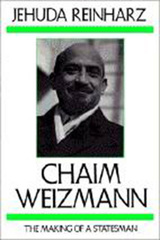
Chaim Weizmann
The Making of a Statesman
Jehuda Reinharz
Brandeis University Press, 1985
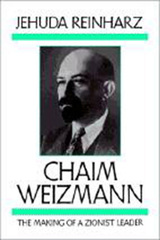
Chaim Weizmann
The Making of a Zionist Leader
Jehuda Reinharz
Brandeis University Press, 1985

Citizenship, Faith, and Feminism
Jewish and Muslim Women Reclaim Their Rights
Jan Feldman
Brandeis University Press, 2011
Religious women in liberal democracies are “dual citizens” because of their contrasting status as members of both a civic community (in which their gender has no impact on their constitutional guarantee of equal rights) and a traditional religious community (which distributes roles and power based on gender). This book shows how these “dual citizens”—Orthodox Jewish women in Israel, Muslim women in Kuwait, and women of both those faiths in the U.S.—have increasingly deployed their civic citizenship rights in attempts to reform and not destroy their religions. For them, neither “exit” nor acquiescence to traditional religious gender norms is an option. Instead, they use the narrative of civic citizenship combined with a more authentic, if alternative reading of their faith tradition to improve their status.
[more]

Civil Society and Dictatorship in Modern German History
Jürgen Kocka
Brandeis University Press, 2010
In this rich and thought-provoking work, Jürgen Kocka focuses his analytic lens on Germany’s long twentieth century, from the empire to the present. He begins by establishing the semantic problematic in the German term Bürgertum and presenting an analytical survey of German civil society over the past 120 years. He then offers a fascinating social history of the GDR, along with a comparative analysis of the East German dictatorship and that of the Third Reich. He further compares Germany’s “two dictatorships” in regard to historical memory, post-regime justice, and historiography before and after reunification. Kocka concludes with a wonderfully expansive view of historical interpretation and even argues for the place of trendiness and fashion in the profession.
[more]
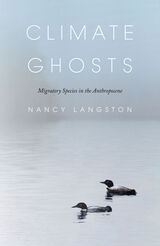
Climate Ghosts
Migratory Species in the Anthropocene
Nancy Langston
Brandeis University Press, 2021
Climate Ghosts deals with the important issue of climate change and human impact on three species: woodland caribou, common loons, and lake sturgeon.
Environmental historian Nancy Langston explores three “ghost species” in the Great Lakes watershed—woodland caribou, common loons, and lake sturgeon. Ghost species are those that have not gone completely extinct, although they may be extirpated from a particular area. Their traces are still present, whether in DNA, in small fragmented populations, in lone individuals roaming a desolate landscape in search of a mate. We can still restore them if we make the hard choices necessary for them to survive. In this meticulously researched book, Langston delves into how climate change and human impact affected these now ghost species. Climate Ghosts covers one of the key issues of our time.
Environmental historian Nancy Langston explores three “ghost species” in the Great Lakes watershed—woodland caribou, common loons, and lake sturgeon. Ghost species are those that have not gone completely extinct, although they may be extirpated from a particular area. Their traces are still present, whether in DNA, in small fragmented populations, in lone individuals roaming a desolate landscape in search of a mate. We can still restore them if we make the hard choices necessary for them to survive. In this meticulously researched book, Langston delves into how climate change and human impact affected these now ghost species. Climate Ghosts covers one of the key issues of our time.
[more]

Come and Hear
What I Saw in My Seven-and-a-Half-Year Journey through the Talmud
Adam Kirsch
Brandeis University Press, 2021
A literary critic’s journey through the Talmud.
Spurred by a curiosity about Daf Yomi—a study program launched in the 1920s in which Jews around the world read one page of the Talmud every day for 2,711 days, or about seven and a half years—Adam Kirsch approached Tablet magazine to write a weekly column about his own Daf Yomi experience. An avowedly secular Jew, Kirsch did not have a religious source for his interest in the Talmud; rather, as a student of Jewish literature and history, he came to realize that he couldn’t fully explore these subjects without some knowledge of the Talmud. This book is perfect for readers who are in a similar position. Most people have little sense of what the Talmud actually is—how the text moves, its preoccupations and insights, and its moments of strangeness and profundity. As a critic and journalist Kirsch has experience in exploring difficult texts, discussing what he finds there, and why it matters. His exploration into the Talmud is best described as a kind of travel writing—a report on what he saw during his seven-and-a-half-year journey through the Talmud. For readers who want to travel that same path, there is no better guide.
Spurred by a curiosity about Daf Yomi—a study program launched in the 1920s in which Jews around the world read one page of the Talmud every day for 2,711 days, or about seven and a half years—Adam Kirsch approached Tablet magazine to write a weekly column about his own Daf Yomi experience. An avowedly secular Jew, Kirsch did not have a religious source for his interest in the Talmud; rather, as a student of Jewish literature and history, he came to realize that he couldn’t fully explore these subjects without some knowledge of the Talmud. This book is perfect for readers who are in a similar position. Most people have little sense of what the Talmud actually is—how the text moves, its preoccupations and insights, and its moments of strangeness and profundity. As a critic and journalist Kirsch has experience in exploring difficult texts, discussing what he finds there, and why it matters. His exploration into the Talmud is best described as a kind of travel writing—a report on what he saw during his seven-and-a-half-year journey through the Talmud. For readers who want to travel that same path, there is no better guide.
[more]
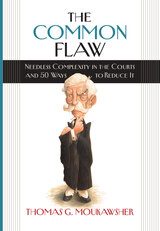
The Common Flaw
Needless Complexity in the Courts and 50 Ways to Reduce It
Thomas G. Moukawsher
Brandeis University Press, 2023
A sitting judge makes the compelling argument that we should simplify lawsuits to create a more humane and accessible legal system.
Americans are losing faith in their courts. After long delays, judges often get rid of cases for technical reasons, or force litigants to settle rather than issue a decision. When they do decide cases, we can't understand why.
The Common Flaw seeks to rid the American lawsuit of this needless complexity. The book proposes fifty changes from the filing of a complaint in court to the drafting of appellate decisions to replace the legal system’s formalism with a kind of humanism. Thomas G. Moukawsher calls for courts that decide cases promptly based more on the facts than the law, that prioritize the parties involved over lawyers, that consider the consequences for the people and the public, and that use words we can all understand. Sure to spark an important conversation about court reform, The Common Flaw makes the case for a more effective and credible legal system with warmth and humor, incorporating cartoons alongside insightful reflection.
Americans are losing faith in their courts. After long delays, judges often get rid of cases for technical reasons, or force litigants to settle rather than issue a decision. When they do decide cases, we can't understand why.
The Common Flaw seeks to rid the American lawsuit of this needless complexity. The book proposes fifty changes from the filing of a complaint in court to the drafting of appellate decisions to replace the legal system’s formalism with a kind of humanism. Thomas G. Moukawsher calls for courts that decide cases promptly based more on the facts than the law, that prioritize the parties involved over lawyers, that consider the consequences for the people and the public, and that use words we can all understand. Sure to spark an important conversation about court reform, The Common Flaw makes the case for a more effective and credible legal system with warmth and humor, incorporating cartoons alongside insightful reflection.
[more]

Crab Wars
A Tale of Horseshoe Crabs, Ecology, and Human Health
William Sargent
Brandeis University Press, 2021
A timely look at the exploitation of a species that has helped with the development of countless drugs and is fast becoming endangered.
Because every drug certified by the FDA must be tested using the horseshoe crab derivative known as Limulus lysate, a multimillion-dollar industry has emerged involving the license to bleed horseshoe crabs and the rights to their breeding grounds. William Sargent presents a thoroughly accessible insider’s guide to the discovery of the lysate test, the exploitation of the horseshoe crab at the hands of multinational pharmaceutical conglomerates, local fishing interests, and the legal and governmental wrangling over the creatures’ ultimate fate. In the end, the story of the horseshoe crab is a sobering reflection on the unintended consequences of scientific progress and the danger of self-regulated industries controlling a limited natural resource. This new edition brings the story up to date as companies race to manufacture alternatives to the horseshoe crab blood, which is now essential for testing vaccines such as those developed to counter COVID-19. However, horseshoe crab populations are still dwindling, with profound implications not only for the future of the crabs themselves but also for the ecosystems that depend on them.
Because every drug certified by the FDA must be tested using the horseshoe crab derivative known as Limulus lysate, a multimillion-dollar industry has emerged involving the license to bleed horseshoe crabs and the rights to their breeding grounds. William Sargent presents a thoroughly accessible insider’s guide to the discovery of the lysate test, the exploitation of the horseshoe crab at the hands of multinational pharmaceutical conglomerates, local fishing interests, and the legal and governmental wrangling over the creatures’ ultimate fate. In the end, the story of the horseshoe crab is a sobering reflection on the unintended consequences of scientific progress and the danger of self-regulated industries controlling a limited natural resource. This new edition brings the story up to date as companies race to manufacture alternatives to the horseshoe crab blood, which is now essential for testing vaccines such as those developed to counter COVID-19. However, horseshoe crab populations are still dwindling, with profound implications not only for the future of the crabs themselves but also for the ecosystems that depend on them.
[more]

Curtains?
The Future of the Arts in America
Michael M. Kaiser
Brandeis University Press, 2015
In this clear-minded but sobering book, Michael M. Kaiser assesses the current state of arts institutions—orchestras; opera, ballet, modern dance, and theater companies; and even museums. According to Kaiser, new developments in the twenty-first century, including the Internet explosion, the death of the recording industry, the near-death of subscriptions, economic instability, the focus on STEM education in schools, the introduction of movie-theater opera, the erosion of newspapers, the threat to serious arts criticism, and the aging of the donor base have together created tremendous challenges for all arts organizations. Using Michael Porter’s model of industry structure to describe how industries evolve, Kaiser argues persuasively that unless steps are taken now, midsized performing arts institutions will have all but evaporated by 2035. Only the largest arts organizations will survive, with tickets priced for the very wealthy and programming limited to the most popular and lucrative productions. Kaiser concludes with a call to arms. With three extraordinary decades’ experience as an arts administrator behind him, he advocates passionately for risk-taking in programming and more creative marketing, and details what needs to happen now—building strong donor bases, creating effective boards, and collective action—to sustain the performing arts for generations to come.
[more]
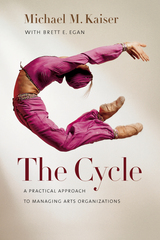
The Cycle
A Practical Approach to Managing Arts Organizations
Michael M. Kaiser and Brett E. Egan
Brandeis University Press, 2013
In the third book of his popular trilogy on creating and sustaining arts organizations, Michael Kaiser reveals the hidden engine that powers consistent success. According to Kaiser, successful arts organizations pursue strong programmatic marketing campaigns that compel people to buy tickets, enroll in classes, and so on—in short, to participate in the organization’s programs. Additionally, they create exciting activities that draw people to the organization as a whole. This institutional marketing creates a sense of enthusiasm that attracts donors, board members, and volunteers. Kaiser calls this group of external supporters the family. When this hidden engine is humming, staff, board, and audience members, artists, and donors feel confidence in the future. Resources are reinvested in more and better art, which is marketed aggressively; as a result, the “family” continues to grow, providing even more resources. This self-reinforcing cycle underlies the activities of all healthy arts organizations, and the theory behind it can be used as a diagnostic tool to reveal—and remedy—the problems of troubled ones. This book addresses each element of the cycle in the hope that more arts organizations around the globe—from orchestras, theaters, museums, opera companies, and classical and modern dance organizations to service organizations and other not-for-profit cultural institutions—will be able to sustain remarkable creativity, pay the bills, and have fun doing so!
[more]
READERS
Browse our collection.
PUBLISHERS
See BiblioVault's publisher services.
STUDENT SERVICES
Files for college accessibility offices.
UChicago Accessibility Resources
home | accessibility | search | about | contact us
BiblioVault ® 2001 - 2024
The University of Chicago Press









